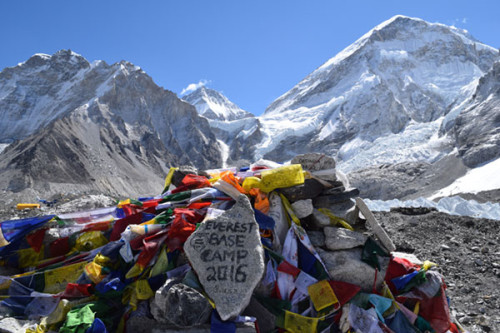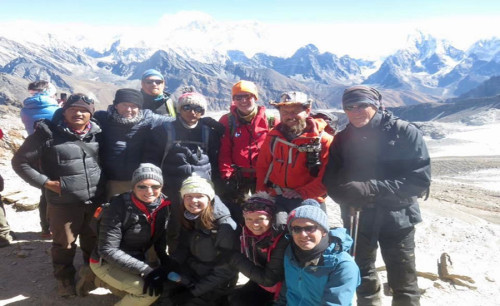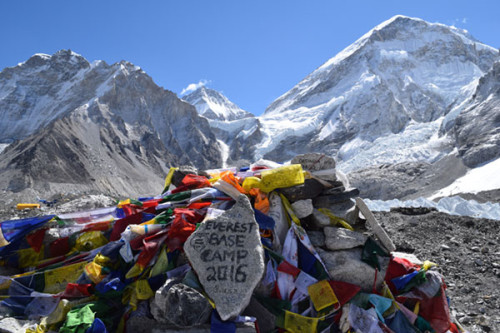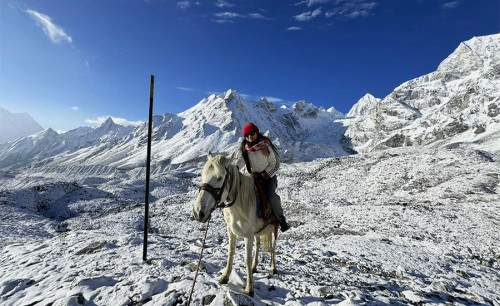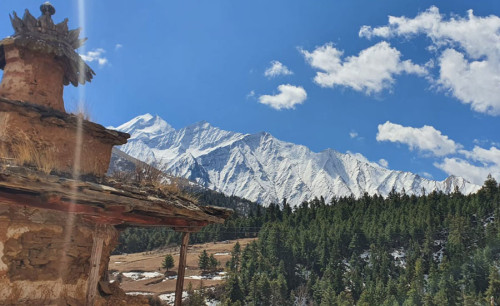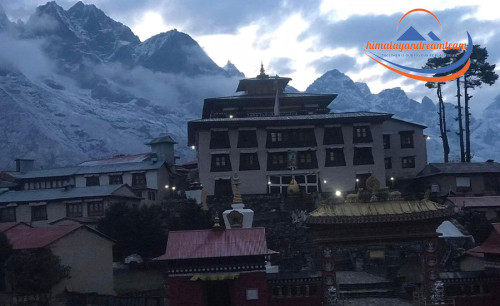List of Conservation Areas in Nepal
Published On : 13th May, 2024 By Himalayan Dream Team

Guardians of the Wild: Conservation Areas in Nepal
Nepal, known for its diverse ecosystems and rich biodiversity, has established several conservation areas to protect its unique flora and fauna. These areas, often less explored than the national parks, play a crucial role in conservation efforts by integrating community participation with environmental and wildlife protection. This blog post delves into the major conservation areas in Nepal, shedding light on their significance, landscapes, and the wildlife they protect.
1. Annapurna Conservation Area
Location & Size: Stretching over 7,629 square kilometers in the north-central part of Nepal, the Annapurna Conservation Area is the largest protected area in Nepal.
Special Features: This area is unique as it encompasses several climatic zones from sub-tropical lowlands to arid high-altitude plateaus. It includes the Annapurna mountain range, famous trekking routes like the Annapurna Circuit and the sanctuary trek, and the picturesque Kali Gandaki Gorge, the deepest gorge in the world. The area is home to diverse wildlife, including snow leopards, Himalayan tahr, and over 450 species of birds.
Conservation Initiatives: The conservation efforts here are community-led, focusing on sustainable tourism practices and the preservation of local cultures and traditions.
2. Manaslu Conservation Area
Location & Size: Located in West-Central Nepal, the Manaslu Conservation Area covers an area of 1,663 square kilometers.
Special Features: Surrounding the eighth highest peak in the world, Mount Manaslu, this area is known for its rich cultural heritage and biological diversity. It offers a less commercial trekking experience compared to more popular routes, providing a peaceful environment for those who venture through its trails.
Conservation Initiatives: The area focuses on protecting the habitat of endangered species like the snow leopard and red panda, alongside promoting ecotourism that benefits local communities.
3. Kanchenjunga Conservation Area
Location & Size: Covering 2,035 square kilometers, this conservation area is situated in the northeastern corner of Nepal.
Special Features: Named after Mount Kanchenjunga, the third highest mountain in the world, this area is renowned for its alpine grasslands, temperate and subtropical forests, and high-altitude wetlands. It's a hotspot for trekkers seeking solitude and pristine natural beauty.
Conservation Initiatives: Conservation efforts here are geared towards preserving the unique landscape and the diverse wildlife, including musk deer, snow leopards, and red pandas, with active involvement from the indigenous communities.
4. Gaurishankar Conservation Area
Location & Size: Spanning an area of 2,179 square kilometers, it lies in the northeastern region of Nepal, safeguarding the habitats surrounding Mount Gaurishankar.
Special Features: This area is noted for its rugged terrain, breathtaking landscapes, and the religious significance of Mount Gaurishankar. The region supports a variety of ecosystems and is particularly important for bird conservation.
Conservation Initiatives: The area promotes community-based tourism and sustainable natural resource management, ensuring the protection of its rich biodiversity while supporting local livelihoods.
5. Api Nampa Conservation Area
Location & Size: Located in the far western region of Nepal, this conservation area covers about 1,903 square kilometers.
Special Features: The area is distinguished by its scenic landscapes, including the Api and Nampa mountains, and is critical for the conservation of medicinal plants and herbs that are native to the region. The diverse fauna includes endangered species such as the Himalayan black bear, snow leopard, and blue sheep.
Conservation Initiatives: Efforts here focus on habitat conservation, controlling poaching, and enhancing the livelihoods of local communities through sustainable practices.
6. Shivapuri Nagarjun National Park
Location & Size: Though primarily categorized as a national park, Shivapuri Nagarjun also functions as a conservation area due to its proximity to Kathmandu and its role in protecting the valley’s watershed and biodiversity.
Special Features: It serves as an oasis for biodiversity near the urban center, offering a quick escape to nature with rich forests and a variety of wildlife, including leopard, deer, and over 300 species of birds.
Conservation Initiatives: Its management involves extensive community participation, focusing on preserving water resources and providing educational opportunities about conservation.
Nepal’s conservation areas are vital for the protection of its natural heritage. They not only preserve crucial habitats and biodiversity but also foster a sustainable relationship between nature and the communities that live within and around these regions. Visiting these areas provides an insight into the delicate balance of conservation and community development, offering a deeper understanding of Nepal’s commitment to protecting its environment. These efforts ensure that Nepal’s landscapes remain vibrant and thriving for generations to come, making them essential destinations for anyone interested in conservation and natural beauty.
Recent From Blog

10th Apr, 2024

30th Apr, 2024

16th Apr, 2024

23rd Apr, 2024

23rd Apr, 2024

25th Apr, 2024

26th Apr, 2024

26th Apr, 2024

27th Apr, 2024

27th Apr, 2024

29th Apr, 2024

29th Apr, 2024

29th Apr, 2024

2nd May, 2024

2nd May, 2024

6th May, 2024

6th May, 2024

12th May, 2024

12th May, 2024

12th May, 2024

13th May, 2024

12th May, 2024

13th May, 2024

13th May, 2024

12th May, 2024

13th May, 2024

12th May, 2024

12th May, 2024

12th May, 2024

12th May, 2024

12th May, 2024

12th May, 2024

12th May, 2024

13th May, 2024

13th May, 2024

14th May, 2024

14th May, 2024

14th May, 2024

14th May, 2024

15th May, 2024

14th May, 2024

14th May, 2024

16th May, 2024

19th May, 2024

19th May, 2024

20th May, 2024

24th May, 2024

28th May, 2024

28th May, 2024

29th May, 2024

29th May, 2024
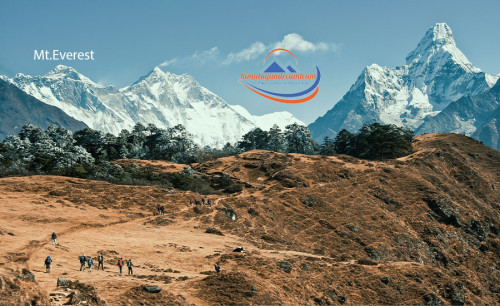
29th May, 2024

29th May, 2024

29th May, 2024


